First of all, let’s get one thing straight… there’s nothing inherently wrong with a HECM reverse mortgage. I know, a lot of people think there is, but it’s not true and they’re wrong.
The HECM, which stands for Home Equity Conversion Mortgage, was created by Congress, is regulated by HUD, and is insured by FHA. It’s a perfectly fine mortgage product that does exactly what it promises to do every single time and today, there are over a million homeowners who have chosen the HECM reverse mortgage.
The HECM is just an FHA insured mortgage, just like any FHA mortgage. The difference is that with a HECM, you can decide if, and when, you want to make payments… and you never HAVE to make them.
You can decide to make monthly payments, or quarterly payments or yearly payments… interest only payments or payments that include principal and interest… or you can choose to make no payments, in which case the interest you’re not paying gets added to your loan’s balance.

For example, let’s say you owed $100,000 on your HECM mortgage and the interest rate was three percent. That means the interest on that loan would be $3,000 a year… because three percent of $100,000 is $3,000, right?
Well, if you decided to make no payments all year then in this example, you’d end up owing $103,000. On the other hand, if you decided to make interest only payments, then your loan balance wouldn’t go up. The thing you have to remember is that while it’s true that your loan balance goes up when you make no payments, your home’s value is presumably going up as well.
So, let’s say your home is worth $500,000 and it goes up two percent a year. That means it’s going up by $10,000 a year, which is two percent of $500,000. If you made no payments, using the numbers from the example above, the loan would go up by $3,000, but the home would go up by $10,000.
And, they let you do that with a HECM because… you’re old.
HECMs are only available to homeowners over age 62. I really believe that if HECMs were available to people in their 30s, it would be the only mortgage in the country. No one would ever choose anything else.
I’ve been studying HECMs for five years now, and I’ve come to realize that the problems you hear related to HECMs or reverse mortgages aren’t caused by the HECM itself, the problems arise when people don’t understand them and use them poorly.
I thought it would be helpful if I provided a list of the most common mistakes that I’ve seen people make with reverse mortgages. So, here are my Top 12 Biggest Mistakes People Make with Reverse Mortgages…

1. Borrowing more than you need.
This is perhaps an obvious one, but it still happens and when it does, it can cause problems.
Never borrow more money than you need… from anything or anyone. Borrowing money means paying interest and if you don’t have a need for the money, you certainly don’t need to pay interest on it either.
Plus, the HECM Line of Credit can be set up so that if you do need money for something, you can get it from your line of credit. And you don’t pay interest on your line of credit… until you borrow it. So, it makes more sense to leave money that you don’t need in your line of credit until you need it.
Now, there is one thing to remember about HECMs… you can’t access money from your line of credit until year two, so after the first 12 months. Therefore, if you need money in the first year, you do have to take it when the loan closes. If you don’t take it then, you won’t be able to get it until the first day of the 13th month.
But, remember… you’re HECM Line of Credit is a revolving line of credit.
You can choose to pay it down or off and then borrow it again whenever you need it. In fact, every dime you pay onto your HECM mortgage, will appear on your line of credit… so, you can always get any money you’ve paid into the loan back in an emergency, or just because you want it back.

2. Planning to move in a couple years.
If you’re planning to move in a couple of years, then maybe a HECM isn’t right for you. Maybe it still is, but maybe it isn’t. Here’s why…
Getting a HECM means you have to pay for FHA insurance, just as you would with any FHA mortgage. You don’t pay it out-of-pocket, but it does go on your loan balance. The amount is based on two percent of the appraised value, so if your house is worth $500,000, then the FHA insurance is $10,000.
If you plan to keep living in the house for many years, then it’s not really a big deal because over time your home will appreciate and the $10,000 will likely seem relatively unimportant.
Like, over ten years, it’s only $1,000 a year, which many people find a small price to pay for the sort of flexibility and security the HECM provides, but if you’re moving next year or the year after, then it might not be worth it.

3. Never making a payment.
With a HECM mortgage, you never have to make a payment on the loan. You do have to keep paying your property taxes, insurance and regular maintenance, but you are never required to make a payment on the loan.
However, just because you don’t have to make a payment, doesn’t mean that never making one is a good idea. It really depends on your plan for retirement.
Some people switch to a HECM and never make a payment because they don’t care about leaving the home to heirs, so they don’t care how much equity they have when they die.
They decide that they want to use their equity to live mortgage free through their retirement years and at the end, whatever is left… is left. Others want to pay down their mortgage as low as they can.

One big advantage of the HECM is that it’s called a “non-recourse” loan, which means that upon the death of the homeowner, the amount owed can’t exceed the current market value of the home at that time.
So, if upon your death, you owed $500,000 on your HECM, after not making a mortgage payment for 20-30 years, and the home at that time was only worth $400,000, then your heirs would be able to simply walk away. No one would ever have to pay back the money you borrowed, in excess of whatever the home was worth when you died. The FHA insurance would pick-up the difference.
No other mortgage works like that.
Look, you can have a HECM and still pay off your house… there’s nothing wrong with that idea either. It’s simply a safer mortgage for retirees, because as we age, we don’t know what exactly will happen. And, if things go badly, you’ll kiss the ground to know you can stop making mortgage payments at any time and for any length of time… and that you have a line of credit that you can access tax-free.
And, with a HECM, you can’t be late on a payment, because there’s no due date for payments.

4. Can’t afford property taxes.
With a HECM, you never need to make a payment on the loan, but you do still need to pay your property taxes, insurance and normal maintenance. If paying those amounts looks like it’s going to be a problem, then you should not get a HECM mortgage.
Failure to pay property taxes is how people with HECMs can find themselves in foreclosure. In some states, like California where Prop. 13 keeps property taxes low, it’s not often a problem, but in states where property taxes are much higher, like New York comes to mind, you have to consider whether you’ll be able to keep paying those high amounts in retirement.
And, if you don’t think you can, then don’t get a HECM. It may be time to sell the home.
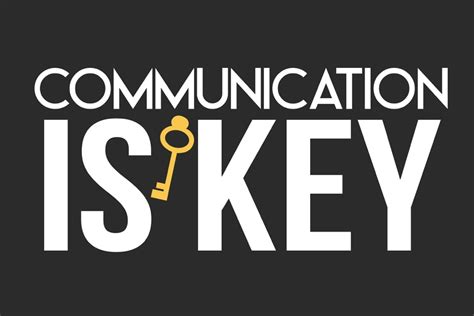
5. Not talking to adult children.
Too many people who switch to the HECM in retirement, don’t tell their children about what they’re doing and why.
This is, of course, a very personal choice. It depends on your children and the relationship you have with them. I wouldn’t dream of telling you what to do in your specific situation, but in general, I think telling adult children is better than not.
The reason is that adult children, especially if expecting to inherit the home free and clear upon your death, need to understand that you’re going to use some of that equity to make your retirement years better and safer. They need to understand that the money has to come from somewhere, and if not from the equity in the home, then from your retirement accounts, and if not there, from THEM.
I was once visiting with a woman in her mid-70s and her son was ostensibly there to listen and help her make decisions. Her mortgage payments were around $2600 a month and her monthly income was around $2200. She had been getting by each month by spending her 401(k) money, which is taxable… and she was running out fast.
When I walked in, the first thing her son said to me was, “So, you’re trying to sell my mom a reverse mortgage.”
I replied, “No, I’m definitely not here to do that. My first preference would be that she win the lottery and my second choice would be that you give her an extra $2,000 a month so she can live comfortably and not lose her home to foreclosure, because that’s what is going to happen if she doesn’t change something.
And, if neither of those things is a realistic possibility then I think the only other options are that she switch her existing mortgage to the HECM… or sell the home.”
I wasn’t trying to be a jerk… it’s just that he needed to better understand the position his mother was in… and that she didn’t want to sell the home she had lived in for the last 20 years. Once he saw what I was saying, he understood what she was doing and why… and he was in favor of it.
The point is that the money someone needs in retirement has to come from somewhere. If it comes from home equity, it’s tax free. If it comes from a 401(k) or IRA account, then it’s taxable as ordinary income. But, if the money comes from the home equity, then presumably there will be more left over in the 401(k) or IRA.
That’s why people buy homes in the first place, so they’ll have something of value they can use to make their retirement years better.

6. Spending 401(k) money first.
This point was also touched on in #5, but I’ll add some detail to make it easier to understand.
Money saved in a qualified retirement account, like a 401(k) or IRA, is taxable as ordinary income. (Maybe not in a Roth IRA, but very few people have those.).
That means, depending on your income, that you’ll have to pay income tax on withdrawals, which can mean depleting the account faster than necessary.
Money that comes from a HECM Line of Credit, on the other hand, is TAX-FREE, and it’s always better to spend tax-free money than taxable, right?
Let’s say that you needed in-home care for whatever reason, and let’s say that it was going to cost you $6,000 a month. If you use 401(k) or IRA money, depending on the state in which you live, you could need to withdraw $10,000 to get the $6,000 after tax that you need.
If you did that for one year, it would mean depleting your retirement account by $120,000, instead of the $72,000 that you’d actually need for the in-home care. The difference is $48,000!
That means that you are depleting your retirement account by $48,000 more each year than you actually need, because you’re using taxable dollars. If you used money from a HECM Line of Credit, you’d be using $72,000 of your home’s equity to pay for $72,000 worth of in-home care.

The point is that, by using money from a HECM Line of Credit, more of the money in your qualified retirement accounts is preserved. And not only do you benefit from using tax-free dollars, but presumably your retirement account is invested and earning returns, maybe 5-10% a year.
But, once you take it out of the qualified account, it will no longer be earning returns, so you not only lose by paying the taxes, you also lose the future appreciation in your retirement account on the amounts withdrawn.
And, let’s say that you did withdraw $120,000 to pay for the in-home care, in this example, and that you were earning 10 percent a year on your invested funds.
That means no longer earning that 10 percent per year on the $120,000 you withdrew. It means no longer earning the $12,000 that you would have earned had you left the money in the qualified account, which means losing $120,000 over 10 years.
So, in this example, by using $120,000 of your 401(k) money to pay for in-home care, it will not only mean paying $48,000 in taxes, but also losing future returns on your 401(k).
Had you taken the money you needed from your HECM Line of Credit instead, you would have only needed to take $72,000 for the year’s worth of in-home care at $6,000 a month, and the money in your qualified retirement account would remain invested and earning returns.
Bottom-line… money in your qualified retirement accounts is expensive money. It’s taxable and it’s growing. Money from your HECM Line of Credit is tax-free. And, even when you take it out, your home continues to appreciate for years into the future.
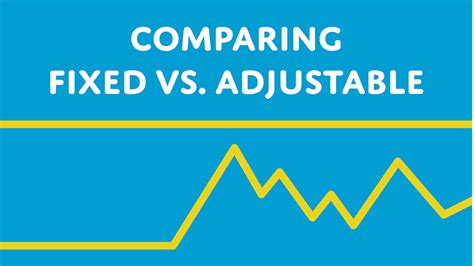
7. Choosing a fixed rate over adjustable.
This is a mistake that some people make when choosing a HECM, but it sure doesn’t sound like a mistake… until you realize how the HECM Line of Credit works over time.
Let’s start here: HECMs come with either fixed or variable interest rates. And, although with other types of mortgages, I might say that fixed rates are preferable, when it comes to the HECM, the variable rate is usually the better choice. Here’s why…
The only way you can get the HECM with the line of credit attached is to take the variable rate, which by the way, is not that different from the fixed rate. That’s because no one knows when you’re going to borrow the line of credit money, so no one knows where rates will be at that time.
But, here’s the big thing about the HECM Line of Credit… it’s guaranteed to increase each year by whatever the interest rates is, plus half a point. So, if the interest rate were 3.5 percent, then that year your line of credit would go up by four percent. If the interest rate were 4.5 percent, then your HECM Line of Credit would go up that year by five percent.
And, that line of credit growth compounds.
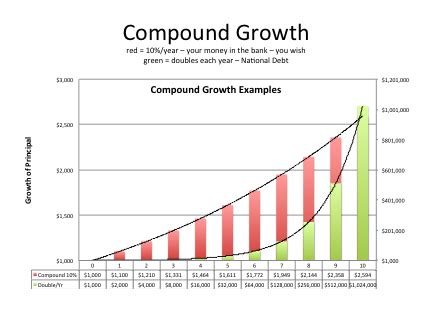
Over time, it adds up… and it doesn’t matter whether your home’s price goes up or down. The HECM Line of Credit is guaranteed to increase every year irrespective of your home’s value. Your home might have gone down in value, but your HECM Line of Credit is guaranteed to increase every year.
If interest rates rise, then your line of credit goes up even faster. At some point, it’s possible that your line of credit is worth more than the house itself. In that way, having a HECM Line of Credit can be a very effective HEDGE against falling or stagnant home values.
If you opened a HECM Line of Credit at age 62… and didn’t touch it until you turned 82, then even if rates were four percent, your $200,000 credit line would have grown to more than $400,000. If interest rates went up to seven percent, over 20 years, your $200,000 HECM Line of Credit would grow to roughly $800,000!
And it doesn’t matter what the home is worth, the line of credit growth is guaranteed no matter what. Even if the home goes down, it goes up. And you can use the money for anything.
If you need money for long-term care, you can use the money from a HECM Line of Credit without having to qualify for insurance or comply with insurance policy restrictions.
That’s why you want to look very closely at the HECM with the variable interest rate. In a way, you’re actually hoping that rates rise because that will make your credit line rise faster and farther.
The HECM rates are very reasonable, by any standard. Today, you could get a HECM with the line of credit starting at roughly 2.5 percent… with a five percent lifetime cap.
That means that your HECM interest rate could never go higher than 7.5 percent… five points above the 2.5% rate with which you started.
And, it can’t happen overnight because it can’t go up more than one percent in any one year.

8. Paying cash for next home.
Here’s another thing that people do, usually when they don’t know they have a choice… they pay cash for their next home. I know what you’re thinking… how can that be a mistake? Well, it can and here’s why.
One of the HECM program products is called HECM-for-Purchase and it’s a way of using a HECM reverse mortgage to purchase a home.
Basically, with the HECM-for-Purchase, you put approximately 50% down, and the HECM picks up the rest. You can then make payments when you want to, and you can skip them whenever you want to, just like with the standard HECM. (The older you are, the less you’d have to put down.)
Let’s say you sold your home for $700,000… and walked away, after costs, with $650,000. And you wanted to buy your retirement home for $500,000.
Well, using the HECM-for-Purchase to buy your next home, you could put approximately $250,000 down on the next house, have all the benefits of the HECM, AND you could put the other $400,000 that you received from the sale of your last home, in your own bank account.

You could still make payments whenever and for however much you want to, but you’d never have to make a payment. You could decide to make a payment once a year, for example.
With no due date for payments, you can’t be late… and that protects your credit score too.
The real problem with paying cash for your next home, in this example, is that you may not be able to access that equity when you need it. It’s a bit like burying the money deep in your back yard. You know it’s there, but getting to it isn’t easy or assured.
Should you find that you do need to access some of your equity, you may find that you don’t qualify for a Home Equity Line of Credit, or even a traditional mortgage. Those things may be relatively easy to get while you’re still employed, but at 70 or 80 years of age, it’s an entirely different matter.
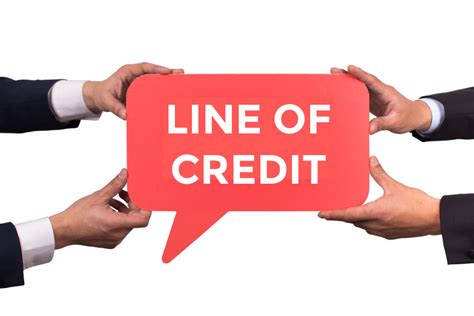
9. Not using the line of credit to your advantage.
The HECM Line of Credit is unique. Nothing else does what the HECM Line of Credit does or can do, and yet, few people use it to their best advantage.
As I described above, the HECM Line of Credit is guaranteed to increase each year by whatever the interest rate is, plus half a point. And that credit line growth compounds over time, regardless of the home’s value. Even if the home goes down in value, the HECM Line of Credit is guaranteed to go up every year.
But, there’s something else about the HECM Line of Credit that you need to understand. Every single dollar that you pay into your HECM mortgage, will go onto your credit line… dollar for dollar.
Let’s say that you had a $100,000 HECM Line of Credit and you made a payment of $1,000 every month for a year. Well, at the end of that year, you would have paid $12,000 into your mortgage, but your line of credit would have also increased by $12,000… in addition to growing by whatever the interest rate is, plus half a point.
By making some payments into your HECM mortgage, you increase your equity and simultaneously juice your line of credit, dollar for dollar.
Over time, this can make your credit line increase to an amount that exceeds your home’s value. By making interest only payments into your HECM, you could get the annual growth rate to compound at 10 percent or more, which will likely make it rise faster than the home itself.

10. Not refinancing when rates are lower or program rules change.
It has been said that the only thing that’s constant… is change, and no truer words have ever been spoken. Everything changes, sometimes for the worse, but often for the better. So, even once you have your HECM in place, you should still keep an eye on things because the HECM program does change over time.
For example, a couple of years ago, the program lowered the annual amounts that go to FHA insurance. It went from 2.5 percent a year, to half a percent. That’s a big drop and should that sort of thing occur, you want to know about it so you can take advantage of the change by refinancing.
Or, maybe interest rates drop, as they have in the last few years.
If that happens, if rates go from 4.5 percent to 2.5 percent, then you’ll definitely want to refinance in order to lower your borrowing costs over time. With traditional or forward mortgages, the rule of thumb was that if rates drop by one point or more, it’s worth refinancing… and that probably holds true with a HECM as well.
There are some special rules, however, that apply to refinancing a HECM. For example, the borrower must benefit by an amount equal or greater than five times the closing costs. So, if the closing costs are $5,000… then the borrower must be gaining at least $25,000 by refinancing, either in the line of credit or cash.
If not, you can’t refinance, and they put that rule in place to prevent unscrupulous loan officers from refinancing borrowers in their best interests… and not the borrowers.

11. Not keeping track of home values.
Just because you have a HECM, and are no longer worried about making monthly mortgage payments, does not mean that you should ignore your home’s (hopefully) rising value.
In fact, with a HECM you definitely want to keep track of home values in your area for two reasons:
- Because as your home’s value rises, you may be able to access more of your equity by refinancing. Let’s say that when you got your HECM, your home was worth $500,000, but a few years later, it’s worth $600,000. By refinancing into a new HECM, you’d probably be able to access more cash and increase your line of credit.
- Because when values are rising, you may want to forego making any payments, letting your equity build as a result of the rising values. If, on the other hand, you see values falling, you may decide to make a few payments on the loan in order to lessen the impact of your balance rising at the same time values are falling.
It helps to work with a mortgage loan officer who is committed to a career specifically helping people with HECMs. That sort of professional will watch your home’s value and the program changes so they can let you know when it makes sense to look at refinancing.
It’s why I never recommend that someone get their HECM from someone they don’t know who’s calling from a phone room. Frankly, that sort of person may not even be in the industry next month, let alone years into the future. HECMs are a specialty area, so make sure you’re working with someone who specializes in the HECM.

12. Not making home equity part of the overall retirement plan.
For most of us, our homes are our largest single asset. And yet, many people don’t even consider that value when planning for retirement.
It’s a mistake not to consider your home equity when considering your retirement years. Downsizing into a smaller, less expensive home is something most retirees consider at some point, others move out of state to find lower state taxes and home prices.
Another strategy some people use is to create an income stream using their property by renting a room, or building an apartment over the garage, if zoning laws allow. Still others look to move into a duplex so they can rent one side and live in the other.
I refer to it as: “Retirement Equity Planning,” and it should be a standard component of retirement planning for everyone who owns a home.
How will things look in five years or even 10, should you stay on the same course, and how would switching to the HECM or using the HECM Line of Credit or HECM-for-Purchase change that financial and lifestyle outlook.
Those are not the sort of questions you should ignore, nor should you put them off because the sooner you consider them, the more you stand to benefit.
Overall, when it comes to retirement, recognizing a situation sooner is always better than later. If you wait until the house is on fire, all the fire department can do is try to extinguish the flames. But, had you considered the risk of a fire sooner, you might have avoided it starting in the first place.
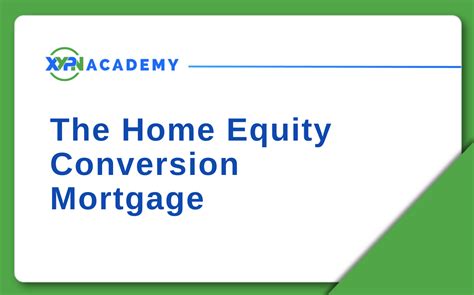
Conclusion…
First of all, I truly hope this helps those who read it. HECMs aren’t complicated, but they are different than traditional or forward mortgages and as such, they can take some time for people to get their arms around.
Don’t feel badly about that. When I first started researching HECMs five years ago, I had no idea what they were and I found it very difficult to learn about them.
I ended up spending eight months calling lawyers, financial planners, CPAs, Realtors, banking executives, homeowners, retirees and government employees at HUD and FHA before I became comfortable with all of the ins and outs of the HECM program.
Now, I’m not suggesting that you’ll need to do that kind of in-depth research. Hopefully, I can help to short-cut that learning curve significantly.
All you have to do is email me your questions… I’m happy to help get you the sort of rock-solid answers you can take to the bank, pun intended.
Just know this… once I understood the HECM advantages as compared with traditional forward mortgages, I fell in love with them, and I’m pretty sure you’ll do the same.
Mandelman out.
Email me your questions at: mandelman@mac.com. Or, I’ve created a section on my blog called HECM Video FAQs, where I answer many of the questions homeowners often ask me… on video. Click that link and I may have the answer you’re looking for.








